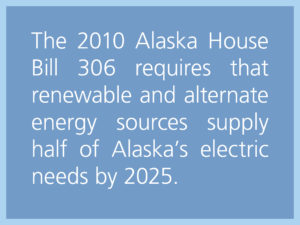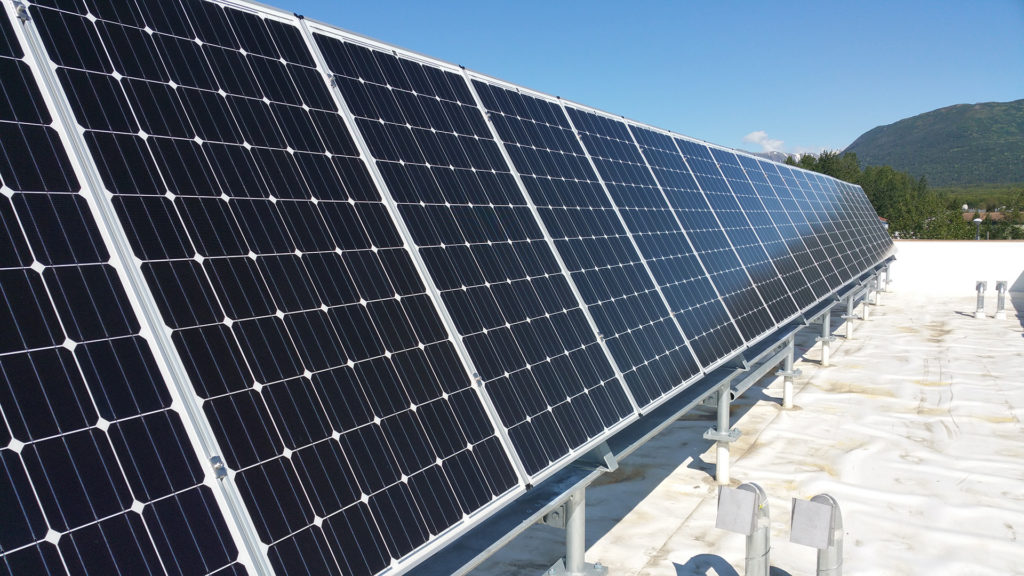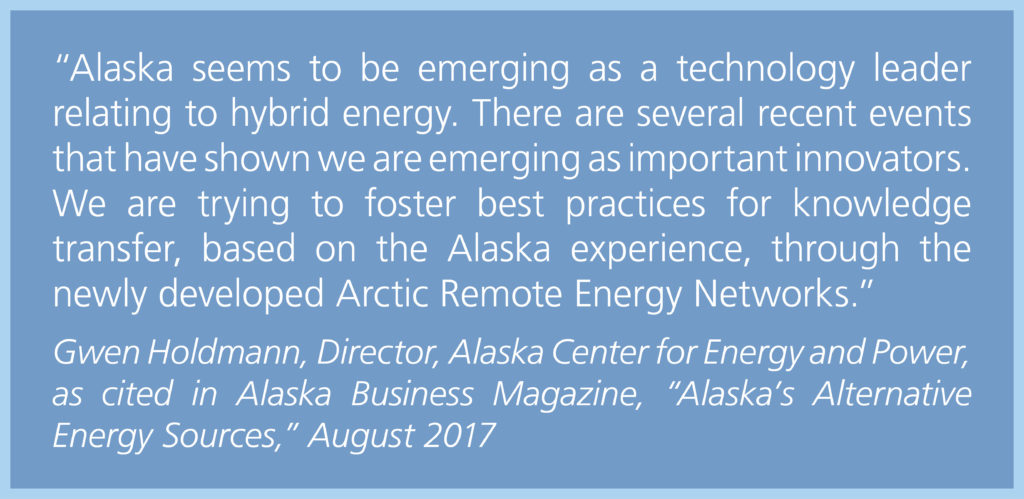 Alaska: a land so vast and sparsely populated it placed last in the 2015 U.S. Census Bureau’s population density calculation at 1.3 persons per square mile (49th place went to Wyoming with 6.0 persons per square mile). Known for its wildlife, wilderness, and relentless winters; it is a land that has an incredible abundance of natural resources and tremendous logistical and environmental challenges. And perhaps surprisingly – it is a land where solar energy is flourishing.
Alaska: a land so vast and sparsely populated it placed last in the 2015 U.S. Census Bureau’s population density calculation at 1.3 persons per square mile (49th place went to Wyoming with 6.0 persons per square mile). Known for its wildlife, wilderness, and relentless winters; it is a land that has an incredible abundance of natural resources and tremendous logistical and environmental challenges. And perhaps surprisingly – it is a land where solar energy is flourishing.
Land of the Midnight Sun
A primary factor in Alaska’s solar energy development is the extreme abundance of summer sun: north of the Arctic Circle the sun never sets during the long summer. Every year Utqiaġvik (previously known as Barrow), the northernmost city in the U.S., experiences 84 consecutive days without a nightfall. And, while the sun does go down in places south of the Arctic Circle, it is not below the horizon for long: Anchorage (Alaska’s largest city and located 512 miles south of the Arctic Circle) has just five nighttime hours on the summer solstice – the longest day of the year. Alaska has immense solar energy potential despite being so far north that its average summer temperatures are lower than in any other U.S state.
Why Make the Switch?
Reducing the carbon footprint and dependence on oil are the usual reasons for switching exclusively to solar or creating a hybrid energy system by adding it. In Alaska, the high cost of energy is another major component. Alaska is rich in traditional energy resources, including petroleum, natural gas, coal, and timber. However, production and transportation costs significantly decrease their economic feasibility. Costs in Alaska’s many small, isolated rural communities that use diesel-electric generators as their primary fuel source can easily be five times higher than in Anchorage (which already has costs among the highest in the nation).
As the worldwide production of solar energy systems has improved and increased, the high initial investment cost for solar energy has lowered significantly. Residents and businesses in the U.S. can also obtain additional solar cost reductions through extended tax incentives and federal tax credits. These lower costs make solar energy much more attractive and contribute to the growth of the industry.
Unique Structural Challenges for Alaska Solar Design
The requirements for solar energy systems are straightforward: one needs solar panels or “PV arrays” to collect the sun’s light, a converter to change the sunlight into usable electricity, and a means to deliver the electricity throughout the building or to an energy grid. Large PV arrays can be mounted separately at ground level or on south facing walls, but are most commonly mounted on rooftops. Rooftops must be strong enough to accommodate the additional weight, which is where solar design in Alaska becomes especially challenging.
To handle the reality of six or more months of winter snow-cover in most of the state, the structural design of buildings fitted with solar energy panels must be particularly robust. In addition to the weight added by the solar panels themselves, the angled/raised installation that best collects the solar energy causes the snow to drift unevenly across the roof’s surface. Also, mounting points must be integrated into the roofing to ensure that the frame of the PV array is mounted securely and does not cause the roof to leak or dam.
With the additional complexities PV array placement creates, the services of an experienced, professional structural engineer when installing solar panels (especially in Alaska) is a sound investment. For Reid Middleton’s structural engineers – with a thorough understanding of the severe wind, weather, and seismic conditions found in Alaska – the challenges of solar energy have been researched, understood, and adopted into our typical project expectations. The solutions that have been designed and constructed thus far have already positively impacted Alaskan lives. And, as the work being done contributes to and expands the existing world-wide body of knowledge, it stands to benefit the entire global community.



